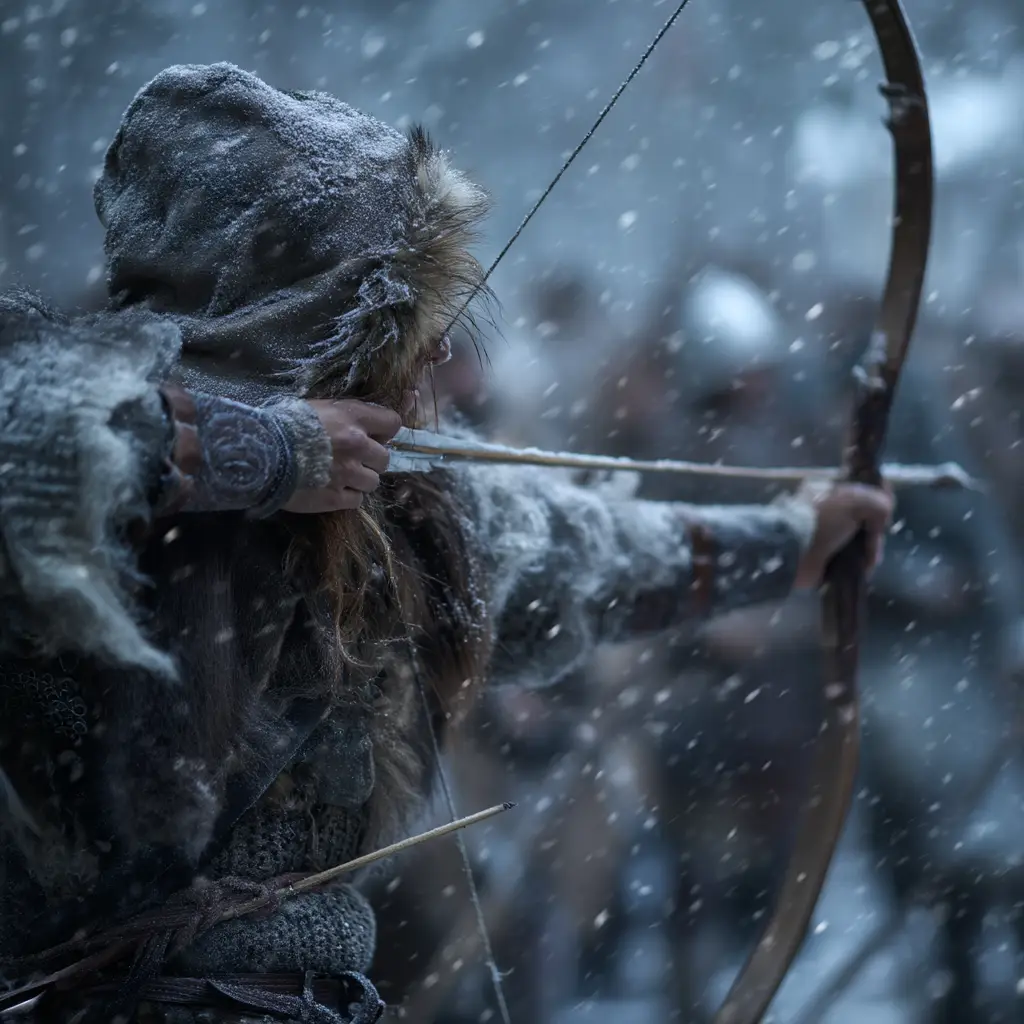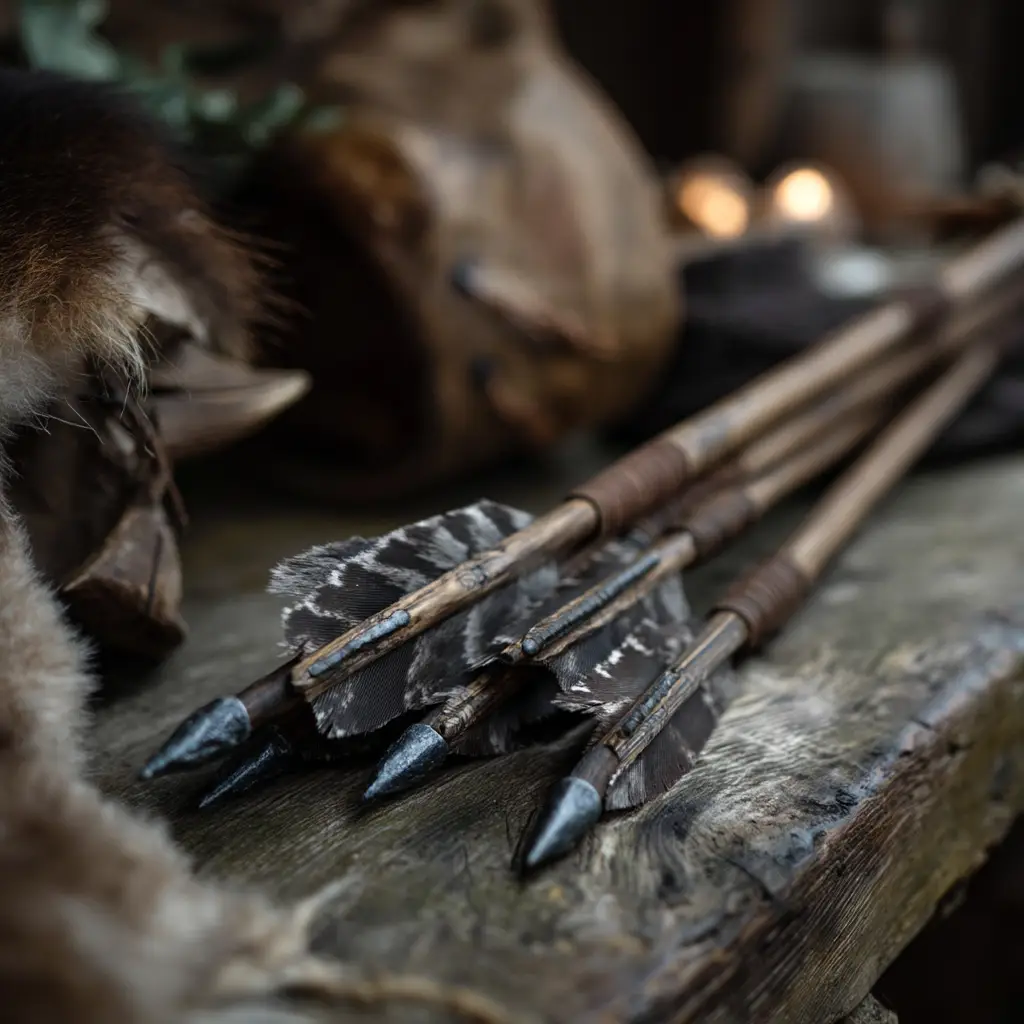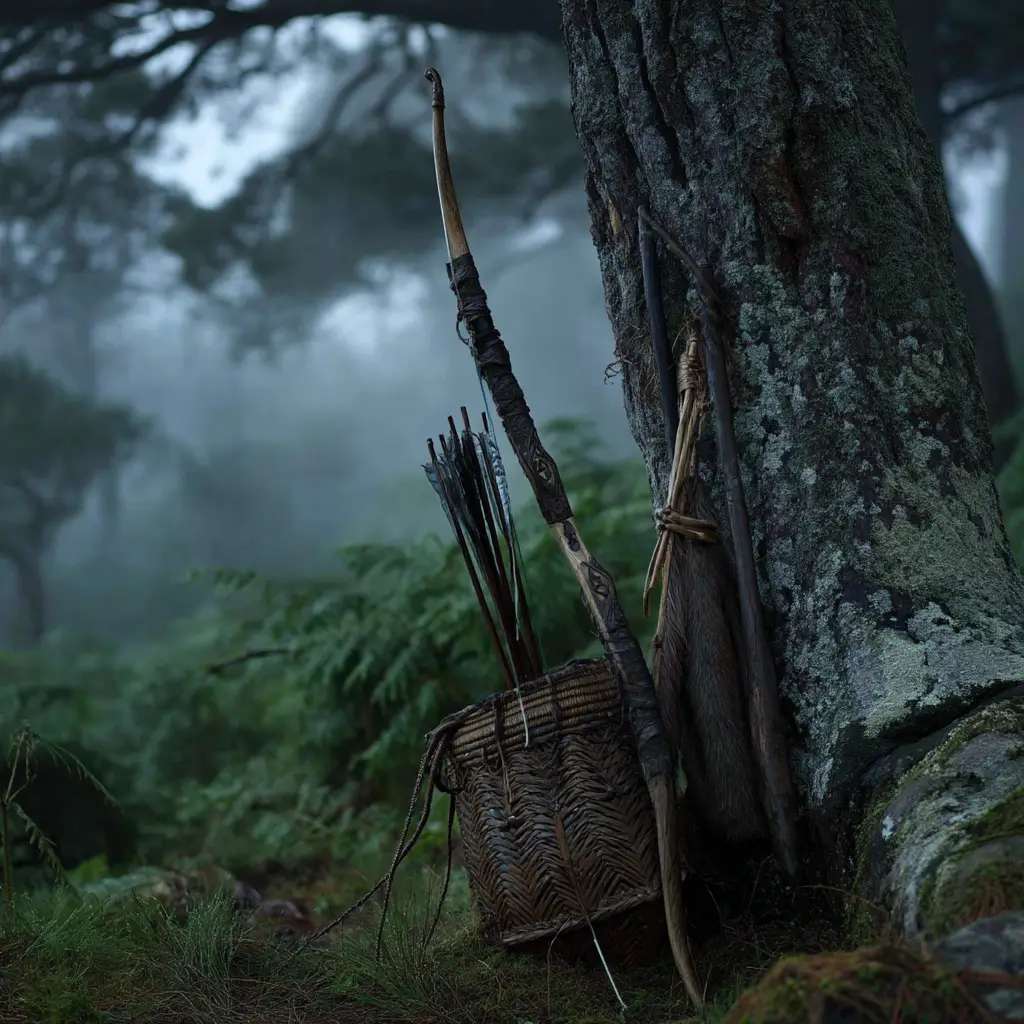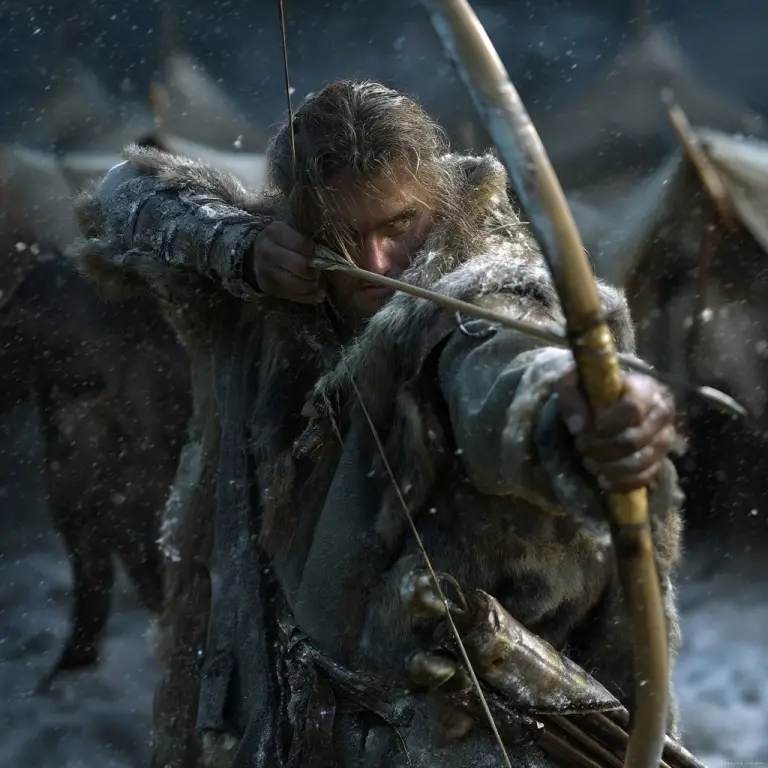The Viking Bow: Craftsmanship, Use, and Legacy
The Viking bow was a vital tool of war, hunting, and daily life in the Viking Age, roughly from the late 8th to early 11th centuries. It reflected both the craftsmanship and practical needs of the Norse people, and it played an important role in their survival, exploration, and battles.
Design and Construction
Viking bows were typically longbows, with lengths often between 1.7 to 2 metres. The most common material was yew wood, prized for its combination of strength and flexibility. Other woods like ash, elm, and juniper were also used, depending on availability.
Key features of the Viking bow:
- D-shaped cross-section: This shape provided strength and allowed for efficient energy transfer.
- Self-bow design: Made from a single piece of wood, rather than being laminated or composite.
- Horn or bone nocks: Reinforced tips to prevent splitting and to hold the bowstring securely.
- Linen or hemp bowstrings: Treated with beeswax for durability and moisture resistance.
Archaeological finds, such as the Hedeby bow from Denmark, give us detailed insights into Viking bow-making techniques.
Arrows and Arrowheads
Viking arrows were typically 70 to 90 cm long, made from materials like pine, birch, or ash. Feathers, usually from geese, were used for fletching to stabilise flight.
Arrowheads were crafted for different purposes:
- Bodkin points: For piercing armour.
- Barbed heads: For hunting game.
- Wide cutting blades: For inflicting severe wounds in battle.
Metal arrowheads were usually iron and were often recovered at old Viking battle sites.
Use in Battle and Hunting
While not the primary weapon in close combat (where axes, swords, and spears dominated), the bow was important in:
- Naval warfare: Vikings used bows to attack ships from a distance or repel attackers.
- Raiding and sieges: Archers would soften enemy lines or defend fortifications.
- Hunting: Bows provided food through deer, elk, or bird hunting, especially during winter months.
Experienced Viking archers were highly valued, and their ability to shoot accurately from ships or behind shield walls gave them a tactical edge.
Cultural and Symbolic Role
In Norse sagas and poetry, the bow is sometimes mentioned alongside heroic warriors, though it was less glorified than the sword or axe. It represented a practical tool for survival but also held symbolic importance in the sagas as a mark of skill and precision.
Legacy and Influence
The design and techniques of Viking bowmaking influenced later medieval bows in Scandinavia and beyond. Modern reconstructions, based on archaeological finds, have allowed enthusiasts and historians to rediscover Viking archery techniques.
Today, the Viking bow is celebrated in historical reenactments, archery events, and museum exhibitions, standing as a testament to the skill and resourcefulness of the Norse people.



